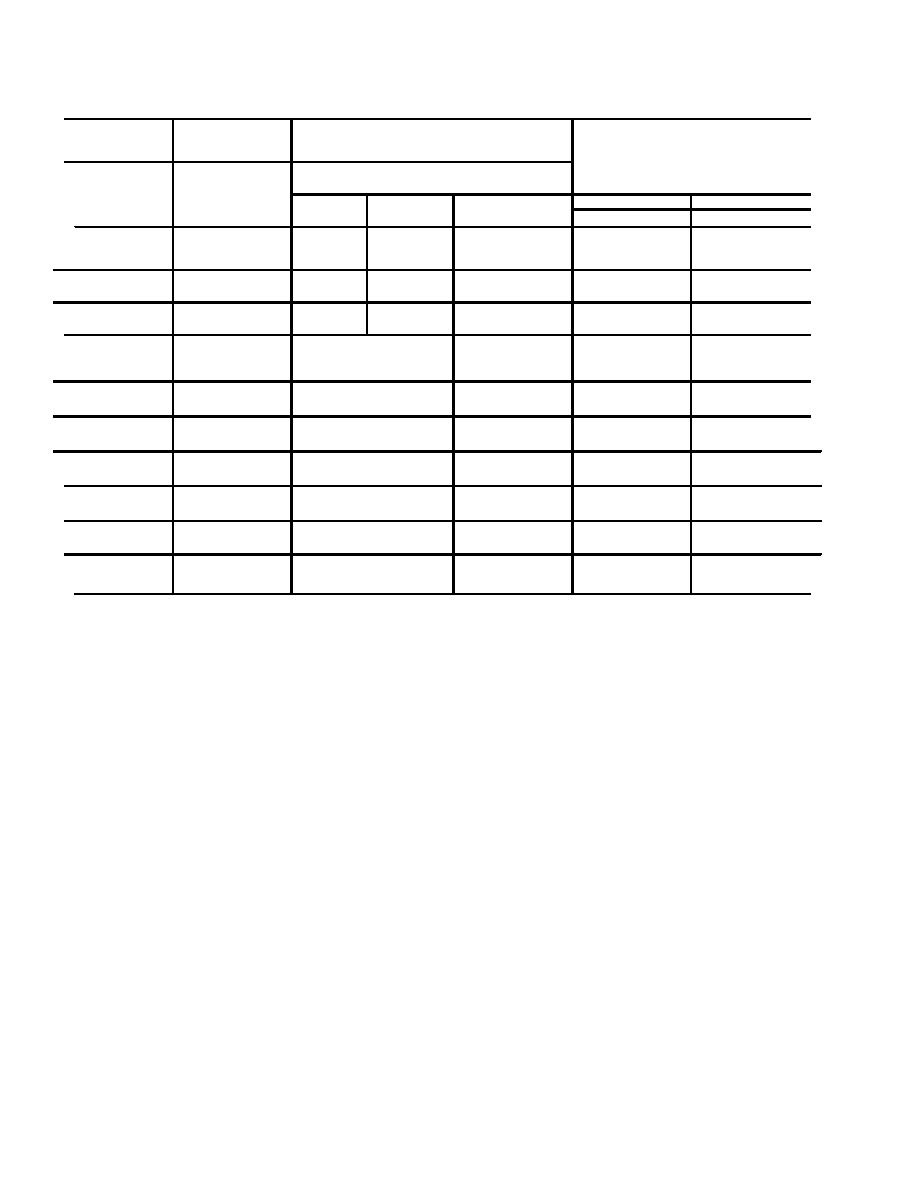
*SB 740-97-38
Master Sampling Table
Lot
Size
Sampling Plan
Acceptance-
Sample Size
Rejection No.
No.
Sample
Cumulative
Major-A
Major-B
Items
No.
Major-A
Major-B
Sample Size
AC
RE
AC
RE
2-8
3
2
0
1
0
1
9-15
3
2
0
1
0
1
16-25
3
3
0
1
0
1
FIRST
8
8
0
2
0
3
26-90
SECOND
8
16
1
2
3
4
FIRST
13
13
0
3
1
4
91-150
SECOND
13
26
3
4
4
5
FIRST
20
20
1
4
2
5
151-280
SECOND
20
40
4
5
6
7
FIRST
32
32
2
5
3
7
281-500
SECOND
32
64
6
7
8
9
FIRST
50
50
3
7
5
9
501-1200
SECOND
50
100
8
9
12
13
FIRST
80
80
5
9
7
11
1201-3200
SECOND
80
160
12
13
18
19
FIRST
125
125
7
11
11
16
3201-10000
SECOND
125
250
18
19
26
27
AC = Acceptance Number
RE = Rejection Number
(a) Single sampling plan. A single sample
defect class. If an additional sample is required for only
one particular defect class, the inspection of the second
plan, corresponding to the appropriate lot size and
sample will be restricted to only that particular defect
defect classification, is used involving lots of 25 items or
class. For example, if the sampling table indicates
less. A separate sample size and pair of acceptance
acceptance for the Major-A defect class, but requires an
and rejection numbers is shown under the column
additional sample to reach and accept or reject decision
headed Major-A and Major-B. The numbers under the
for Major-B defects, Major-A defectives so observed on
column headed AC refer to the maximum allowable
the second sample will not contribute to lot rejection of
number of defective item(s) in the sample that are
the Major-A defect class. When a rejection number is
permissible for acceptance. Conversely, the numbers
reached in a second stage sample, inspection will be
under the columns headed RE refer to the minimum
discontinued.
number of defective item(s) in the sample required to
(3) Inspection method.
Perform technical
cause rejection of the lot.
(b) Double sampling plan. A double sampling
inspection of the selected samples. Functional or
performance tests should be avoided unless there are
plan, corresponding to the appropriate lot size is used if
significant indications that components of the items
a successive stage cumulative acceptance and rejection
have deteriorated to a degree that operational problems
numbers are indicated. The same sample size is used to
will exist.
determine the acceptance for both Major-A and Major-B
c. Defect Classification. Refer to Appendix II and
defectives. The interpretation of the columns headed by
III for listings of defects and their classifications.
AC and RE is the same as that described for the single
Defects should be classified as critical (when critical
sampling plan in (a) above. If at the first sampling
defects are considered), Major-A, Major-B or Minor,
stage, the number of defective items found is between
even if they are not considered to belong fully in these
the two numbers indicated in the column headed by AC
classes at the time of the inspection, but can reasonably
and RE, an additional sample must be selected to arrive
be expected to be in these classes prior to the next
at an accept or reject decision for only one particular
scheduled inspection period. When inspection or testing
of an item
6

